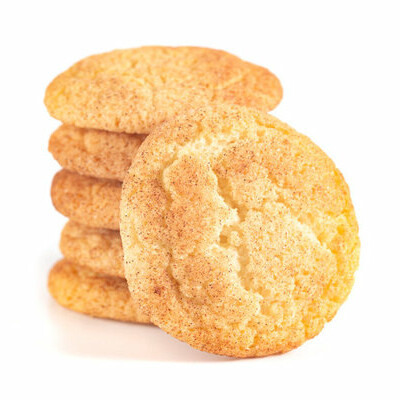
Snickerdoodle
Also known as cinnamon butter cookies
What is a Snickerdoodle?
Snickerdoodle, or cinnamon butter cookies, are drop cookies which are characterized by having a cracked surface and can be crunchy or soft depending on the baking time, thickness and shape they are given before baking.
If the spooned or scooped soft dough balls are left to melt in the oven upon heating, they will become thick discs and tender-textured cookies. If dough balls are crushed and decorated before baking, they will be thin and crunchy.
Origin of snickerdoodle
The snickerdoodle is well known in the US. These cookies are so famous that they are already known as a flavor for different sweet goods and ice creams. Snickerdoodles are a gastronomic institution that is worth trying. Their cinnamon flavor is intense, and their texture is perfect.
How a snickerdoodle is made
Typical formulation of snickerdoodles
| Ingredient | Baker’s % (based on flour weight) |
|---|---|
| Dough | Dough |
| Pastry or all-purpose flour | 100.0 |
| Unsalted butter (melted or softened) | 60.0 |
| Granulated sugar | 100.0 |
| Liquid whole eggs | 25.0 |
| Vanilla extract | 4.0 |
| Salt | 3.0 |
| Baking powder | 1.0 |
| Ground cinnamon | 2.0 |
| Dough topping | Dough topping |
| Granulated sugar | Any amount |
| Cinnamon, ground | Any amount |
| Total dough formula | 295.0 |
* Total dough hydration: 31.0% (water from butter and liquid whole eggs)
Processing
- Mixing (creaming method)
- Cream the butter and granulated sugar until light and fluffy.
- Beat in the whole liquid eggs, then add the vanilla extract.
- Gradually add the solids (flour, baking powder, salt and cinnamon) and beat until fully incorporated.
- Continue mixing for about 30 to 60 seconds until a soft dough forms.
- Makeup and decorating
- Scoop or spoon bulk dough into individual balls for baking.
- Scaling or portioning weight per dough piece 30 g.
- Combine the sugar and cinnamon in a bowl.
- Coat the dough balls in the sugar/cinnamon mixture, then place on paper-lined sheet pans or a solid steel band (continuous ovens).
- Position the dough balls in even rows on the baking sheet so that they bake evenly. Space pieces to allow enough room for the dough to spread.
- Baking: bake at 400°F (200°C) for approximately 9 to 11 minutes, or until golden brown yet still moist.
- Cooling: allow baked cookies on sheet pans to cool at room conditions to an internal temperature of 32°C (90°F).
- Packaging or serving
Application
Cookie quality can be summarized in two terms: cookie size (both width and height), and cookie texture or tenderness.
If a more tender bite and higher cookie spread in the finished product is desired, then a softer wheat flour with lower protein content should be used. On the other hand, if a tough cookie texture with a low spread value is the target, then all-purpose flour, or even hard/soft flour blends, can be used in the formulation.
If properly stored and packaged, sugary cookies have a much longer texture-related shelf-life than any other baked good. Their long shelf-life is a consequence of their low starch gelatinization and hence low retrogradation extent.
Starch gelatinization in cookie baking is restricted due to the very low hydration of the gluten-starch polymeric matrix. Another aspect which greatly inhibits gelatinization is the high amount of sugars and salt which tend to saturate dough’s liquid phase and also compete with gluten and starch for water bonding. Finally, if butter is added to the formula, a “lubrication” effect on the gluten-starch matrix is created, so gluten hydration and development is minimal.1
References
- Kulp, K. “Functionality of Ingredients in Cookie Systems.” Cookie Chemistry and Technology, American Institute of Baking, 1994, pp. 210–279.

